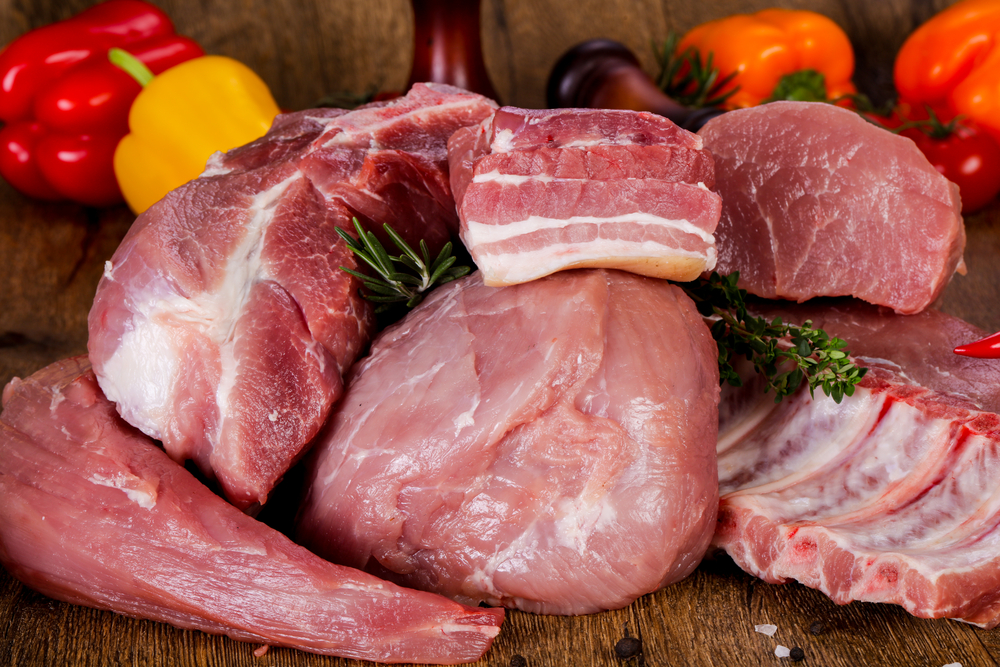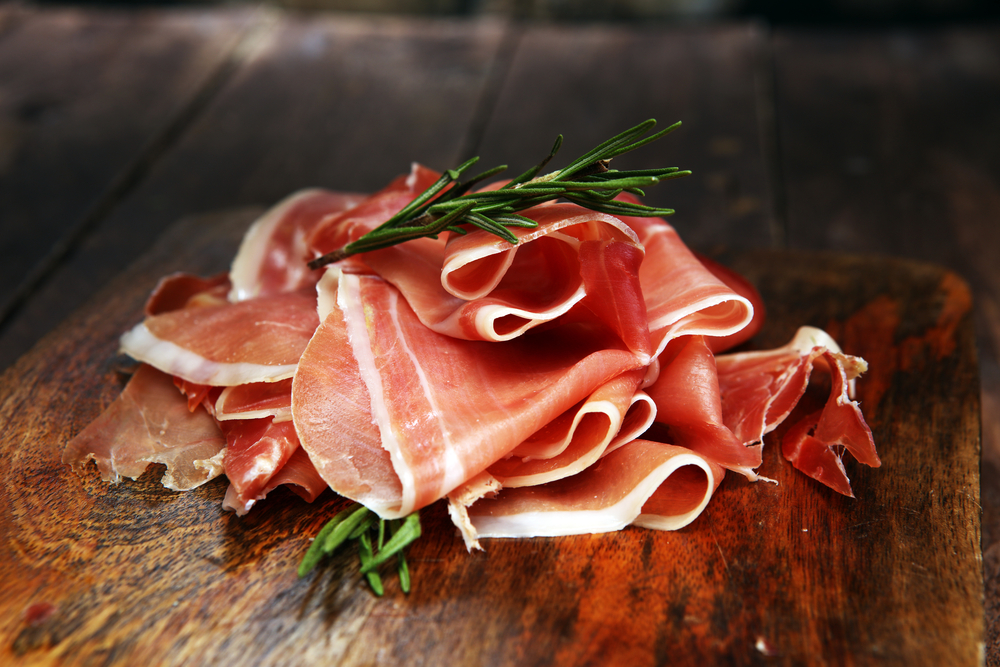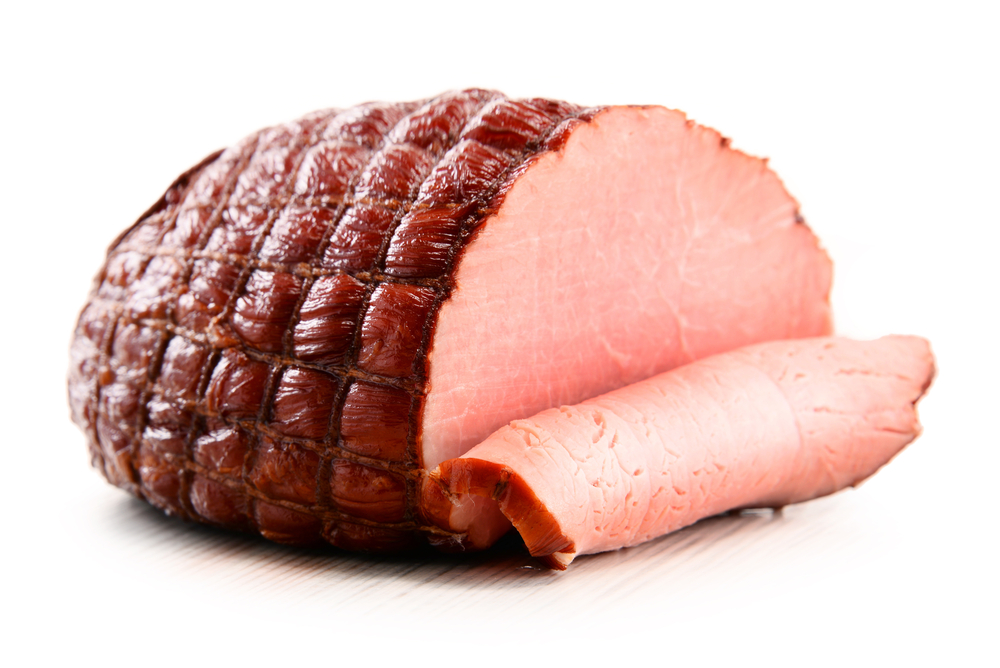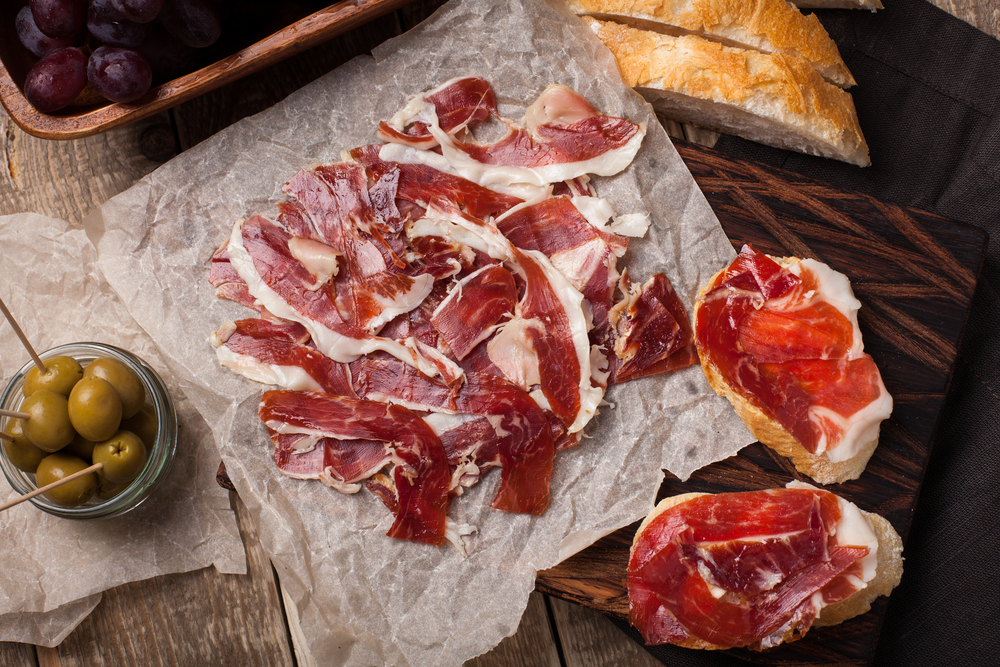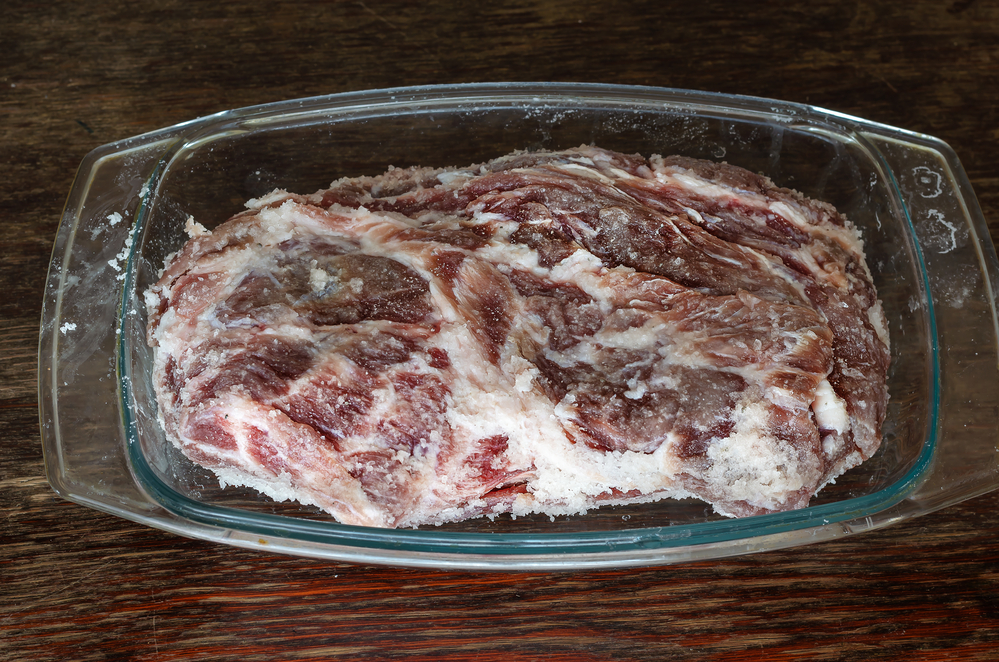Pork and ham are two popular meats that are often used interchangeably in recipes. However, they are not the same thing. Pork is a term used to describe the meat that comes from a domesticated pig, while ham is a specific cut of pork that comes from the hind leg of the pig.
Understanding the differences between these two meats can help you choose the right one for your recipe and ensure that your dish turns out just right.
One of the main differences between pork and ham is the curing process. Ham is always cured, which gives it a distinctive pink color and a salty flavor. Pork, on the other hand, can be sold raw or cured, depending on how it is prepared.
The curing process for ham involves rubbing the meat with a mixture of salt, sugar, and other seasonings and then allowing it to air dry for several months. This process helps to preserve the meat and give it a unique flavor and texture.
Understanding the differences in the curing process can help you choose the right meat for your recipe and ensure that it turns out just right.
Key Takeaways:
- Pork is a term used to describe the meat that comes from a domesticated pig, while ham is a specific cut of pork that comes from the hind leg of the pig.
- Ham is always cured, which gives it a distinctive pink color and a salty flavor, while pork can be sold raw or cured, depending on how it is prepared.
- Understanding the differences in the curing process can help you choose the right meat for your recipe and ensure that it turns out just right.
Understanding Pork and Ham

Pork and ham are both meat products that come from domesticated pigs, but they are not the same thing. Pork is a general term that refers to any meat that comes from a pig, while ham specifically refers to a cut of pork that comes from the pig’s hind legs.
When it comes to cuts of pork, there are many different options available. Some of the most popular cuts of pork include pork chops, pork tenderloin, pork shoulder, pork loin, pork butt, and pork roast.
Each of these cuts has its own unique texture and flavor profile, which makes them suitable for different cooking methods and recipes.
Ham, on the other hand, is typically cured and smoked to enhance its flavor and increase its shelf life. It can be eaten cold or hot and is often served as a holiday centerpiece or sliced for sandwiches.
It’s important to note that not all pork is ham, but all ham is pork. In other words, ham is a specific type of pork, but not all pork is processed into ham.
When it comes to meat production, domesticated pigs are raised specifically for their meat. They are typically slaughtered at around 6 months old and can produce a variety of different cuts of meat. The meat is then processed and sold in grocery stores and butcher shops around the world.
Overall, understanding the difference between pork and ham is important for anyone who enjoys cooking or eating meat. While they may seem similar at first glance, they are actually quite different in terms of taste, texture, and preparation.
The Curing Process
Curing is the process of preserving meat by using salt and other food additives. The curing process is essential for producing ham, which is a type of cured pork. During the curing process, the meat is treated with salt, sodium nitrate, and other ingredients that help to preserve the meat and give it a distinct flavor.
There are two main methods of curing ham: wet-curing and dry-brining. Wet-curing involves soaking the meat in a brine solution that contains salt, sugar, and other flavorings.
The meat is then left to cure in the solution for several days before being smoked or cooked. Dry-brining, on the other hand, involves rubbing the meat with a mixture of salt and other seasonings and then leaving it to cure in a cool, dry place for several days.
Cured ham is a type of preserved meat that has been treated with salt and other additives to extend its shelf life. The curing process gives the meat a distinct flavor and color. Cured ham is usually pink or deep rose in color, while uncured ham is lighter in color.
One of the main differences between cured and uncured ham is the amount of sodium in each. Cured ham is much higher in sodium than uncured ham because it is brined with so much salt.
In addition to salt, cured ham is preserved using sodium nitrate, which is a food additive that helps to prevent bacterial growth and preserve the meat.
In conclusion, the curing process is essential for producing ham, which is a type of cured pork. The process involves treating the meat with salt, sodium nitrate, and other ingredients to preserve it and give it a distinct flavor. Cured ham is much higher in sodium than uncured ham and has a more intense flavor.
Taste and Texture Differences
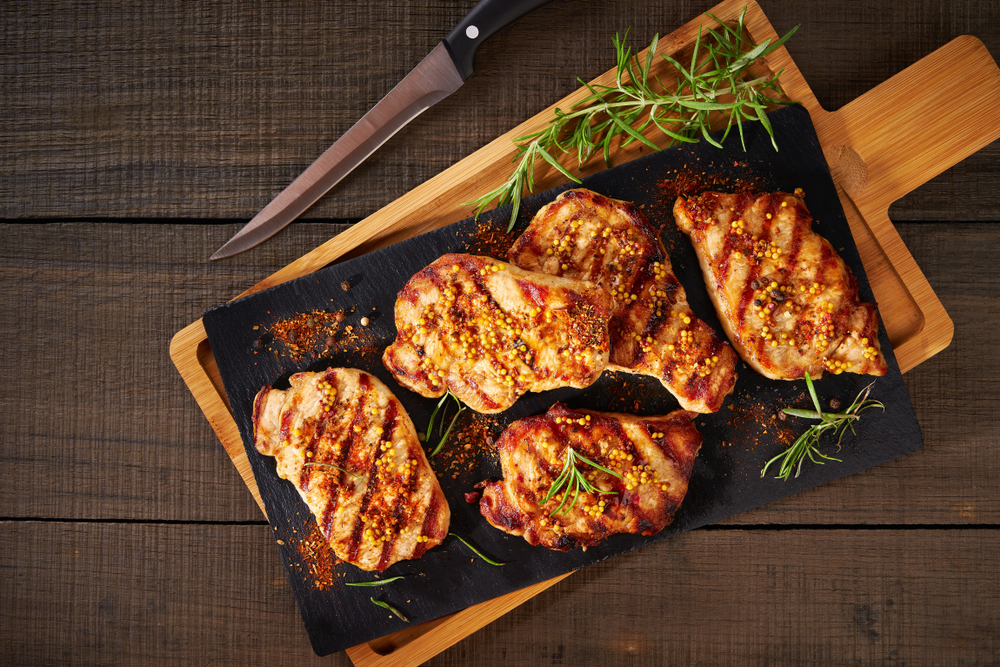
Pork and ham have distinct differences in taste and texture. Pork has a mild flavor that serves as a good base for various sauces, rubs, and marinades.
The leaner the cut of pork, the milder the flavor, whereas the fattier cuts offer a much richer flavor. On the other hand, ham provides a smoky and salty taste that comes from the curing process.
The texture of pork varies depending on the cut. For example, pork loin is lean and tender, while pork shoulder has more fat and connective tissue, making it ideal for slow-cooking methods like braising.
Ham, on the other hand, has a firmer texture due to the curing process. The longer a ham is cured, the firmer its texture becomes.
When it comes to flavor, pork is versatile and can be used in a variety of dishes. It can be seasoned with herbs and spices to enhance its mild flavor.
Ham, on the other hand, has a distinct flavor that can overpower other ingredients in a dish. It’s often used as a standalone protein in dishes like sandwiches or served as a holiday centerpiece.
Overall, pork and ham have different taste and texture profiles that make them suitable for different dishes. Pork offers a mild flavor and a range of textures, while ham provides a smoky and salty taste with a firmer texture.
Cooking and Preparation Methods
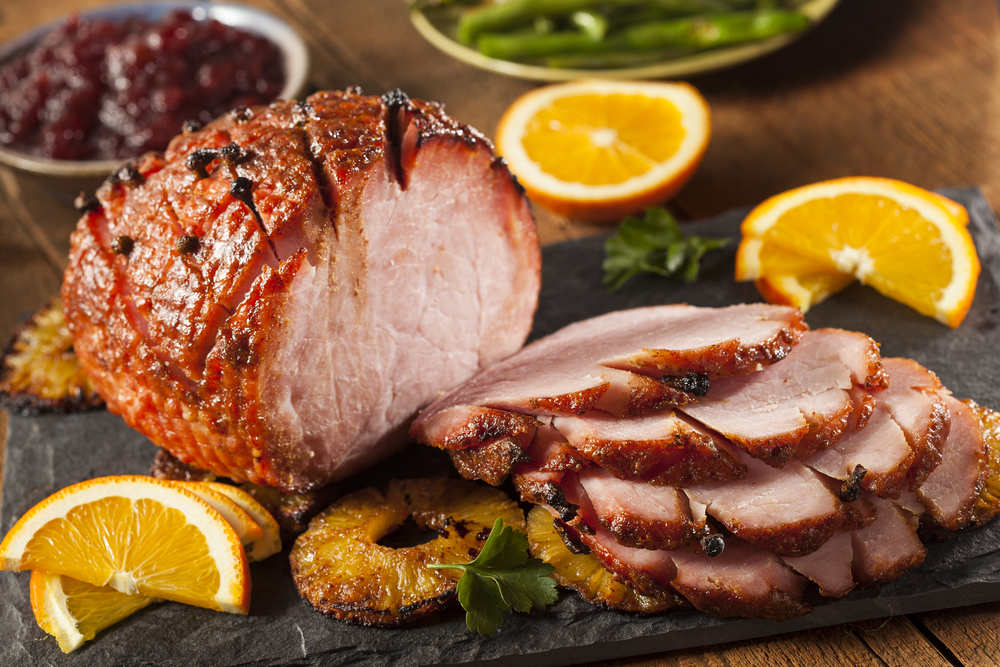
When it comes to cooking and preparation methods, pork and ham differ significantly. Pork can be cooked in various ways such as roasting, braising, grilling, or frying. On the other hand, ham is usually smoked or cured before cooking.
Roasting is a popular method for cooking pork. It involves cooking the meat in an oven at a high temperature, which results in a crispy exterior and tender interior. Braising is another method that involves cooking pork in a liquid, such as broth or wine, at a low temperature for an extended period.
This method is ideal for tougher cuts of pork, as it helps to break down the connective tissue and make the meat tender.
When it comes to ham, smoking is the most common preparation method. Smoking involves exposing the meat to smoke from burning wood chips or sawdust. The smoke imparts a smoky flavor to the meat and helps to preserve it.
Cured ham is another popular method, which involves rubbing the meat with salt and other seasonings and allowing it to dry or age for several months.
Overall, the preparation and cooking methods for pork and ham vary depending on the desired outcome and flavor profile. Whether you roast, braise, smoke, or cure your pork or ham, it’s essential to follow proper food safety guidelines to ensure that the meat is cooked to a safe temperature and free from harmful bacteria.
Common Uses in Recipes
Pork and ham are versatile meats that can be used in a variety of recipes. Here are some common uses for both pork and ham in cooking:
Pork
- Pulled pork: Slow-cooked and shredded pork is a popular ingredient in sandwiches, tacos, and burritos.
- Sausages: Pork sausages are a staple in many cuisines around the world, from breakfast sausages to chorizo.
- Bacon: This salty, smoky pork product is a breakfast favorite and is also used in salads, sandwiches, and as a topping for burgers.
- Recipe ideas: Pork is a popular ingredient in many recipes, including stir-fries, casseroles, and stews.
Ham
- Sandwiches: Ham is a classic sandwich filling, often paired with cheese and mustard.
- Prosciutto: This Italian cured ham is often served as an appetizer or used as a topping for pizza and pasta dishes.
- Ham salad: Chopped ham is mixed with mayonnaise and other ingredients to make a creamy salad that can be served on crackers or as a sandwich filling.
- Recipe ideas: Ham is often used in soups, casseroles, and rice or pasta dishes.
Both pork and ham can also be smoked for added flavor, and leftover ham can be used in a variety of recipes, including omelets, quiches, and frittatas. When cooking with pork or ham, be sure to follow safe food handling practices and cook the meat to the appropriate temperature to avoid foodborne illness.
Health Considerations
When it comes to health considerations, both pork and ham can be part of a healthy diet when consumed in moderation. However, there are some differences that should be taken into account.
Protein
Both pork and ham are excellent sources of protein. They provide all the essential amino acids that the body needs for building and repairing tissues. However, pork contains slightly more protein than ham.
Fat
Pork and ham contain both saturated and unsaturated fats. Pork tends to be fattier than ham, especially the fatty cuts like bacon and pork belly. On the other hand, ham can be quite lean, especially the leaner cuts like ham steak and Canadian bacon.
Sodium Content
Ham tends to be higher in sodium than pork, especially the processed varieties like deli ham and canned ham.
This is because salt is often used in the curing process to preserve the meat and enhance its flavor. If you are watching your sodium intake, it’s important to be mindful of the type and amount of ham you consume.
Other Considerations
In addition to protein, fat, and sodium content, there are other health considerations to keep in mind when choosing between pork and ham.
For example, pork is rich in several essential vitamins and minerals, including thiamin, niacin, vitamin B6, phosphorus, and zinc. Ham also contains these nutrients, but in slightly lower amounts.
When it comes to choosing between pork and ham, it’s important to consider your overall dietary needs and goals. If you are looking for a lean source of protein, consider choosing a lean cut of pork like tenderloin or loin chops.
If you enjoy the flavor of ham, opt for leaner cuts like ham steak or Canadian bacon and be mindful of your sodium intake.
Storage and Shelf Life
One of the main differences between pork and ham is their storage and shelf life. While pork is typically sold as raw meat, ham is usually preserved to enhance its flavor and shelf life.
Refrigerated Storage
Raw pork should be cooked shortly after purchasing it or stored in the refrigerator as soon as possible. It can be stored in the refrigerator for up to five days before it should be cooked or frozen.
Sliced ham, on the other hand, can last for up to two weeks in the refrigerator if it is properly stored in an airtight container or wrapped tightly in plastic wrap. Whole ham, whether cooked or uncooked, can last up to six months in the refrigerator if it is properly wrapped and stored.
Frozen Storage
Both pork and ham can be stored in the freezer for longer periods of time. Raw pork can be stored in the freezer for up to six months, while cooked pork can be stored for up to two months.
Sliced ham can also be stored in the freezer for up to two months, while whole ham can be stored for up to four months.
It is important to properly wrap and label pork and ham before storing them in the freezer to prevent freezer burn and to make sure they are safe to eat.
Shelf Life
The shelf life of pork and ham depends on a few factors, including whether they are cooked or uncooked and how they are stored. Raw pork has a shorter shelf life than ham and should be consumed within a few days of purchase or properly stored in the freezer.
Ham, on the other hand, has a longer shelf life due to its curing process. Unopened, a whole ham can last for up to six months, while sliced ham can last for up to two weeks in the refrigerator.
In conclusion, it is important to properly store and handle both pork and ham to ensure their safety and longevity. Raw pork should be cooked or frozen shortly after purchase, while ham can be stored in the refrigerator for longer periods of time.
When storing in the freezer, it is important to properly wrap and label the meat to prevent freezer burn and ensure it is safe to eat.
Cost and Availability
When it comes to cost and availability, both pork and ham are readily available in most grocery stores and markets. However, the prices of these meats can vary depending on the type of cut and the region where it is sold.
Generally, pork is more affordable than ham. This is because pork is a more commonly consumed meat and is available in various cuts. On the other hand, ham is a specific cut of pork that has been cured, smoked, or both, which makes it more expensive than other pork cuts.
The cost of pork can vary depending on the type of cut, with some being more expensive than others. For example, pork chops and tenderloin are usually more expensive than pork shoulder or ribs. Additionally, the cost of pork can also vary depending on the region where it is sold.
When it comes to availability, both pork and ham are widely available in grocery stores and markets. However, the availability of specific cuts of pork may vary depending on the region and the demand for that particular cut.
In general, pork is a more widely consumed meat than ham, which means that it is usually more readily available in grocery stores and markets.
However, ham is still widely available and can be found in most grocery stores, especially during the holiday season when it is a popular choice for holiday meals.
Overall, both pork and ham are widely available and can be found in most grocery stores and markets. While the cost of these meats can vary depending on the type of cut and the region where it is sold, pork is generally more affordable than ham.
Conclusion
In conclusion, pork and ham are both cuts of meat that come from pigs, but they have distinct differences. Pork refers to any part of the pig that is consumed, while ham is a specific cut of pork that is cured and smoked.
Pork is a versatile meat that can be used in many different dishes and can be cooked in various ways. It has a mild flavor that serves as a good base for various sauces, rubs, and marinades.
The leaner cuts of pork, such as tenderloin, have a milder flavor and are often used in healthier dishes. The fattier cuts, such as belly, have a richer flavor and are often used in dishes that require a more robust taste.
Ham, on the other hand, has a salty, smoky taste due to the curing and smoking process. It is often used as a centerpiece for holiday meals or served as a sandwich meat. Ham can also be used in various dishes, such as quiches or soups, to add flavor.
It is important to note that while pork and ham are both delicious and versatile meats, they can differ in nutritional value. Ham is often high in sodium due to the curing process, while pork can be a lean source of protein. It is important to consider these factors when incorporating pork and ham into a balanced diet.
Overall, understanding the differences between pork and ham can help individuals make informed decisions when selecting meats for their meals.
Frequently Asked Questions
What are some different types of pork meat?
Pork meat comes in many different cuts, each with its own unique texture and flavor. Some common types of pork meat include pork chops, pork tenderloin, pork belly, pork shoulder, and pork ribs.
What is the difference between fresh ham and pork shoulder?
Fresh ham and pork shoulder are both cuts of pork, but they come from different parts of the pig. Fresh ham comes from the hind leg of the pig, while pork shoulder comes from the upper part of the front leg. Fresh ham is usually cured and smoked to make ham, while pork shoulder is often used for pulled pork.
What part of the pig does bacon come from?
Bacon comes from the belly of the pig. It is usually cured with salt and other seasonings, and then smoked to give it its characteristic flavor.
What is ham made of?
Ham is made from pork that has been cured with salt, sugar, and other seasonings. It is then smoked or cooked to give it its distinctive flavor.
Why is ham called ham and not pork?
Ham is a specific type of pork that has been cured and smoked. The name “ham” comes from the Old English word “hamm,” which means the hollow or bend of the knee. This is where the ham comes from on the pig.
Can ham be made from a different type of meat besides pork?
Technically, ham can be made from any type of meat, but traditionally it is made from pork. Other meats, such as turkey or chicken, can be cured and smoked to make a similar product, but they would not be considered ham.



